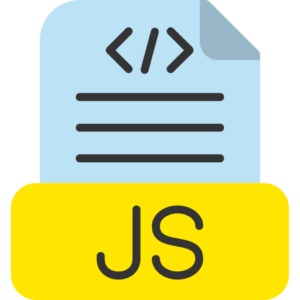Overview of JavaScript and its role in web development
JavaScript is a high-level, front-end and back-end development interpreted programming language in web development, primarily JavaScript programming is used globally as server-side and client-side web development scripts. JavaScript is mainly used to improve interactivity in websites, dynamic web element behaviour, and better client server web resources sharing, better Internet user experience.

So, let’s understand the various aspects of JavaScript programming better.
What is JavaScript Programming?
- Client-side language – JavaScript programming is a client-side front end web development scripting language, so that it runs in the client web browser instead of the server. JavaScript provides direct interactive permission to the website without requiring a round trip to the server.
- Event-driven – JavaScript programming helps to manage event control in a webpage website, such as mouse click event operation, keyboard input element event operation, and webpage load event operation.
- Lightweight and dynamic – In modern times, JavaScript programming is a dynamic and easily typed programming, so that the JavaScript programmer does not need to clearly define the program variable data type.
- Interpreted language – Compared to the old compiled low-level programming language, JavaScript programs are directly interpreted by the web browser without pre-compiling the source code.
Key role of JavaScript programming in web development.
In present times, JavaScript programming plays an important role in the design and development of a modern, interactive event-driven website webpage and web application.
So, let’s know the contribution of JavaScript better.
- Manipulating the DOM (Document Object Model) – JavaScript allows web developers to dynamically make custom modifications to the content, structure and styling of a website webpage by manipulating the DOM. So that Internet users can update and live preview the existing webpage without completely reloading it.
- User interactions – JavaScript programming language is used to manage and control user interaction events, such as clicking a button on a website webpage, submitting an online contact form, applying hover effects to website elements, etc. JavaScript can dynamically validate form input controls in real-time, show or hide website webpage elements, and create custom animations on a webpage as needed.
- Asynchronous operations – JavaScript can manage asynchronous tasks or controls in web development, such as getting data from an API or server without refreshing a website webpage directly in the client browser, where you can do this by using features like AJAX (Asynchronous JavaScript and XML) and Fetch API in JavaScript.
- Front-end frameworks and libraries – There are many supported development frameworks and libraries in JavaScript programming, such as popular front-end frameworks like React, Angular and Vue.js. JavaScript is the foundation for the development of web elements and controls, which allows new and old web developers to create more complex single-page web applications (SPAs) and manage the user interface more efficiently.
- Event handling – JavaScript listens, manages or handles all user events occurring in the web browser, which makes JavaScript programming helpful in developing a responsive and interactive UI user interface in today’s time.
JavaScript programming in full-stack development.
- Back-end with Node.js – JavaScript programming language is not limited to front end development in web development, where with frameworks like Node.js, JavaScript programming can also be used well in server-side backend web development. The Node.js development framework helps web developers develop scalable and high-performance web server and back-end web applications using JavaScript.
- Integrated development – With the current JavaScript web development language being controlled or used both client-side and server-side through the Node.js JavaScript development framework, full-stack web developers can work with a single programming language across the entire stack development, making web application development much easier.
Popular JavaScript development libraries and frameworks.
- React – React is a popular JavaScript development framework or library. React framework developed by Facebook provides a web development user interface. React framework is especially used as a JavaScript library to develop single-page applications (SPA).
- Angular – Angular is a full-fledged front-end JavaScript development framework developed by Google. Where Angular framework is used to develop complex, large scale web applications.
- Vue.js – Vue.js is a progressive JavaScript web development framework for creating user interface UI. Web developers use it as a JavaScript framework for its web development simplicity and flexibility.
- jQuery – jQuery is a fast, small and feature compatible JavaScript development framework or library where jQuery is used to create easy JavaScript tasks like DOM manipulation and event handling.
Role of JavaScript Programming in Web Development Trends.
- Single-page applications (SPA) – SPA enables single page web application development for JavaScript web developers, where the web developer dynamically updates only some particular portion or content of an existing website or webpage, providing a smoother and more responsive user experience in a live webpage.
- Progressive Web Apps (PWA) – In JavaScript web development, PWA is also the central programming for progressive web app development, which combines the best features of developed web apps and mobile apps (offline features capabilities, push notifications, etc.).
- Real-time web applications – In JavaScript programming, with technologies like WebSockets, it helps in live updating real-time applications like chatbot apps, webpage portions or app portions without loading the original website webpage again in the web browser.
JavaScript language ecosystem.
The ecosystem of JavaScript programming is very vast, with a variety of tools, libraries, and online web resources for beginners and expert developers.
Some of the popular tools here include.
- Package managers – In JavaScript development, npm, Node package manager and Yarn help in managing dependencies and libraries.
- Build tools – In any kind of development, tools like Webpack, Babel, and Gulp are commonly used to bundle, transpile, and compile JavaScript source code. Helps to optimize JavaScript.
- Testing frameworks – There are many testing frameworks in JavaScript development, such as Jest, Mocha, and Jasmine, that help to ensure the quality of the program source code.
Challenges in JavaScript Programming.
- Browser compatibility – Different client web browsers understand and behave differently with JavaScript programs, which can lead to JavaScript Preview compatibility issues. For example, tools like Babel help to mitigate this by transpiling modern JavaScript to older versions for better web browser compatibility.
- Security – JavaScript programming can be prone to certain security vulnerabilities such as cross-site scripting (XSS) and cross-site request forgery (CSRF), which requires JavaScript web developers to follow security-related rules and regulations.
- Performance – Although JavaScript programming is efficient in any form of development, large, complex JavaScript applications can produce some performance-related issues.
Conclusion of JavaScript Programming in Web Development.
JavaScript is an essential web development tool for web development today, enabling JavaScript developers to develop interactive, dynamic, and modern websites and web applications. From manipulating the DOM to full-stack application development with Node.js, JavaScript is the best first application development choice for a web developer, allowing JavaScript web developers to manage the operation of everything from fundamental websites to the design and development of complex, high-performance applications.



















































